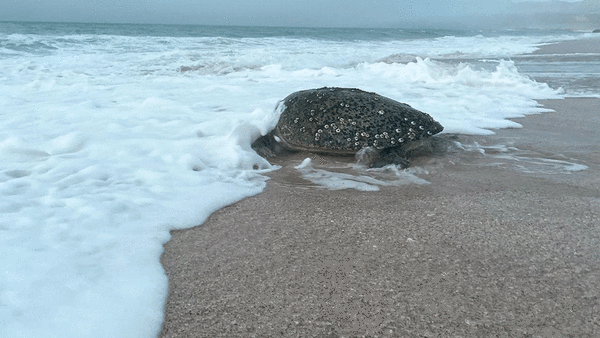

Turtles are a source of tourist attraction. Ras Al Hadd is always a stopping point for most tourists who like spending time watching turtles nesting and laying eggs on the beaches.
Nasser bin Saleh al Zadjali, head of guiding department at Ras Al Jinz Turtle Reserve, said: “As of now the reserve is 120 square km, and the length of the beach is 42 km from Ras Al Hadd to Asilah. Turtles nest along this beach, but most of them are in Ras Al Hadd and Ras Al Jinz.”
“There are several types of turtles that nest on the beaches of the Sultanate of Oman — Green turtle, Olive Ridley, Loggerhead, Hawksbill, but most of them are green turtles,” Al Zadjali said.
“There are 5 turtles from 7 types which are nesting on our beaches and the Sultanate of Oman is one of the most environmentally important sites in the world.

“Turtles can know whether a beach is safe or not, and before leaving the sea, turtles monitor the beach as sea turtles have a strong sense of sight,” Al Zadjali stated.
Hence, female turtles have to find a safer beach in order to avoid any disturbance when they lay eggs. Furthermore, female turtles work hard to secure their eggs.
“Turtles dig large holes, even larger than the size of their body, and inside this hole, they dig a small and deep hole to lay eggs, and then they bury the eggs in the large hole and work to camouflage the location of the eggs,” Al Zadjali added.

TEMPERATURE
“The temperature of the sand determines the gender. If the temperature is less than 28 degrees, Celcius most of them are male. If the temperature is more than 29 degrees Celcius, they are female. If it is in the middle, some of them are males and others are females. The eggs remain for 55 to 60 days until they hatch, and the nesting season is from June to October. The number of turtles gradually decreases in the winter,” he added.
After these turtles grow up, they return to our beaches again and we can know if the same turtle has returned through a study and follow-up of these turtles has been done with the help of various devices placed on the back of the turtles linked to satellites.
The Environment Authority is playing its role in numbering the turtles for many years, and most turtles have a longer life. The average age for green turtles is from 80 to 90 years.

“However, there are many possibilities of extinction, due to overfishing in some countries and also due to pollution. There are significant risks that can cause turtles not to nest on our beaches such as throwing plastic bags into the sea, driving vehicles on the nesting beaches, camping, and using lighting,” Al Zadjali said.
Turtles also lose their
right to live because of their presence in the food cycle or oil pollution in the sea.
Oman Observer is now on the WhatsApp channel. Click here



